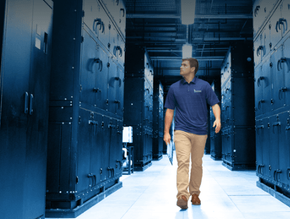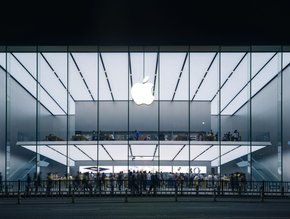Precision Liquid Cooling: A Cost-Saving Solution for Telcos

Liquid cooling solutions company Iceotope has sponsored a new report by STL’s Partners that showcases how advanced edge sustainability solutions can reduce telco operator’s energy usage and carbon emissions.
Titled “Sustainability Insights: Navigating Sustainable Edge Strategies", the companies highlight that solutions such as precision liquid cooling can save operators an average of US$40m a year in energy costs.
Advanced edge sustainability strategies can also reduce telco’s energy usage by 3-5% and one million tonnes of carbon dioxide equivalent (tCO2eq) of emissions for a typical large group operator.
Precision Liquid Cooling removes nearly 100% of the heat generated by the electronic components of a server via the use of dielectric fluid.
Defining an edge sustainability strategy
During a rapidly evolving era of digital transformation, on account of new technologies like AI, liquid cooling technologies are fast-emerging as an efficient solution for removing heat from IT equipment. This is regardless of location, whether it is within a data centre, on-premises data hall, cloud environment or at the edge.
Liquid cooling is very versatile as, whilst most applications have centred on cooling server components, new applications are rapidly materialising across the entire IT infrastructure spectrum. Given an increased need for power, edge sustainability solutions such as these can work to reduce the strain of new demand, including energy usage and carbon emissions.
Edge computing presents a range of challenges and limitations in comparison to traditional data centres. Whilst traditional data centre sustainability has made important strides in recent months, the report suggests that edge sustainability continues to remain overlooked - despite such large growth in edge computing.
More so than in centralised cloud computing, sustainability at the edge poses its own unique challenges because it can operate in varied environments. Tailored, situation-specific strategies become essential for sustainable edge operations, says STL Partners, particularly when considering each operator's unique infrastructure, environment and resources.
Throughout the report, STL Partners considers five subcategories of specialised cooling technologies, including Precision Liquid Cooling, Liquid to Air, Precision Liquid Cooling, Liquid to Liquid, Tank Immersion (Single and Two Phase), Direct to Chip Water Cooling and Specialised Hardware - Ruggedised Servers.
“With edge computing projected to grow to over $450 billion in 2030, it is critical this growth is developed in as sustainable manner as possible – arguably more so than traditional centralised cloud,” says Philip Laidler, Director of Consulting for STL Partners.
“This report examines the multitude of factors that need to be considered when defining your edge sustainability strategy. There is no one-size-fits-all answer and edge operators must select the optimal advanced sustainability strategy based on their unique context.”
Working to reduce telco carbon emissions
Precision Liquid Cooling efficiently captures nearly 100% of the heat generated by servers, thereby cutting energy use by up to 40% and any water consumption by 96% across the entire telco data centre estate from the cloud to the edge.
According to the report, the innovation of this technology is able to allow greater flexibility of IT solutions by eliminating hotspots, minimising wasted space and reducing water consumption.
Also compatible with the same rack-based architecture as air cooled systems, it simplifies serviceability in both data centres and edge locations.
The report finds that precision liquid cooling and liquid to air technology, which was adopted by Iceotope for its KUL RAN solution, ranked highest amongst the cooling technologies. It was found to score well across six of the seven measurement criteria, which consisted of legacy site reuse, energy use, water consumption, longevity of equipment, limited maintenance and COTS hardware adaptation.
Iceotope has consistently highlighted that data centres must prioritise future-proofing their infrastructure over the next few years. Its Precision Liquid Cooling solutions aim to meet new digital and sustainability expectations head-on.
By launching KUL RAN, the company aimed to bring data centre computing to the edge and help telco providers and their customers achieve net zero targets in the process.
On this, Nathan Blom, Chief Commercial Officer for Iceotope, says: “As more data moves to the edge, new challenges for telco providers emerge. Greater sustainability, energy efficiency and serviceability across distributed workloads is needed more than ever before.
“We designed KUL RAN specifically to reduce power consumption and maintenance costs for telco providers as they bring data-centre class compute to the extreme Far Edge. This report from STL Partners validates that advanced sustainability strategies can be a game changer for the Telco Edge.”
******
Make sure you check out the latest edition of Data Centre Magazine and also sign up to our global conference series - Tech & AI LIVE 2024
******
Data Centre Magazine is a BizClik brand






